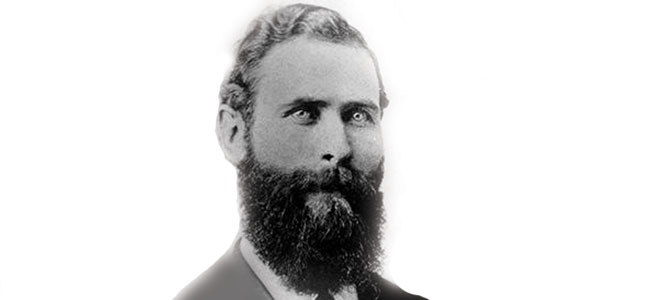October- December,2007

Uriah Smith was born to Samuel and Rebekah Smith in West Wilton, in what is known as the “granite” state of New Hampshire, on May 2, 1832. His father was a highway builder and contractor and his mother a pious, cultured lady. He had three siblings: Samuel Junior, Annie, and John.
At the age of 12 Uriah suffered from a serious infection on his left leg above the knee. When the doctor brought the solemn news that the leg would have to be amputated, Mrs. Smith asked her son, “Will you go through it?”
“Certainly,” was the boy’s reply.
The surgical procedure that day took 20 minutes without any hospital or anesthesia. To replace the original limb, a primitive wooden leg with no joints had to serve as a poor substitute.
When William Miller presented the doctrine of Christ’s return in 1844, Mrs. Smith and her children became believers in the Advent message. However, following the Great Disappointment when Jesus did not come as expected, only the mother still clung to her faith. With her prayers and the help of Joseph Bates, however, Annie was reconverted as was her brother, Uriah, soon afterwards.
A gifted individual, Uriah Smith soon distinguished himself in the church as a leader, teacher, writer of books and pamphlets, editor, poet, and engraver. (Hymn #602 in the Reformation Hymnal, “O Brother, Be Faithful” was also penned by him.) Keen editorial skills qualified Uriah Smith to serve for nearly 50 years as either the chief editor or a key member of the editorial staff of the Sabbath Review and Advent Herald. He was elected as the first secretary of the General Conference and for many years taught Bible at Battle Creek College. As a public speaker, Elder Smith’s sermons were meticulously prepared and quite well appreciated. He was also a kind husband to his wife Harriet and the father of 5 children.
Perhaps the name Uriah Smith is best known for his famous book, Thoughts on Daniel and the Revelation, a thorough, verse-by-verse commentary on the important prophecies found in these books of the Bible.
Interestingly enough, this talented man was also an inventor. Ever since his youth, whenever Uriah knelt for prayer, that wooden leg had been bothersome. So, in his few spare moments, he eventually designed a way for the toes to be able to bend by the addition of hinges and springs. Then he came up with another idea to make the knee more flexible. A few months later, he invented a desk with a folding chair—an invention which he was able to sell to a desk factory for $3,000. These funds provided helpful means for building his family a new home.
Not one to waste time, Uriah Smith devised a way by which he could limit the visitation of those who might be inclined to stop by his editorial office for too lengthy a chat. At his door was posted a sign on which he had drawn a man lying in a coffin, with the bold inscription added, “THIS MAN WAS TALKED TO DEATH!” Potential chatterboxes got the hint and kept their conversations short.
On December 30, 1902, a dreadful thing happened when the Review and Herald building burned down. The workers watched sadly as the building crumbled down to pieces. About two months after that tragedy, on March 6, 1903, Uriah died of a stroke at the age of 71 while on his way to the Review office. His whole life had been bound up with the development of the publishing work. He was buried in Oak Hill Cemetery and thousands assembled to mourn his death.
This fluent writer ever kept before him the blessed hope of his Saviour’s soon return. A graceful and tenderhearted man, his longing and purpose in life had ever been aimed toward that momentous hour. His written works which live on are silent witnesses which continue to bear fruit for glorious, eternal kingdom so soon to come.